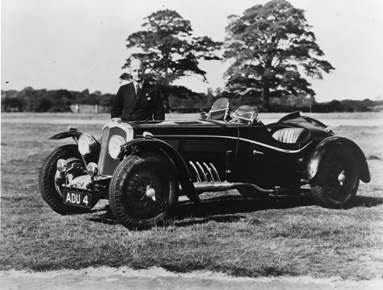Classic Triumph Cars
Triumph Dolomite 8 Parts 4
Classic Triumph Cars
Triumph Dolomite 8 Parts 4
One of the most interesting and unusual development stories in vehicle history, the Dolomite Story begins normally enough, but features an interesting twist during its long production cycle. Keeping the car at the top of its game, two of the UK's most gifted engineers (first by Harry Webster, then Spen King) were responsible for allowing the vehicle to be an excellent example of product planning and platform maximization. The Dolomite went out of production in 1980, but at that point had already enjoyed a 15-year production run, while achieving many monumental ‘firsts' along the way.
Though not a trained engineer or stylist, Donald Healey was one to inspire and produce exceptional vehicles. The 1937 Triumph Dolomite Roadster is such an example. Joining Triumph in 1933, Healey soon became the company's technical director, where he quickly began upgrading Triumph's production vehicle range of Gloria's and Vitesses.
The new Dolomites in 1936 featured their ‘waterfall' style of radiator grill, a production of an obvious inspiration from the latest Hudson Terraplanes. Added to the body style that appeared in 1938, this distinctive feature had the effect they were looking for. Produced in limited numbers, the Dolomite Roadster was more ‘drop-head- than ‘roadster', and was available in two forms, a four-cylinder 1,1767 cc type, or a six-cylinder 1,991 cc model with a longer wheelbase. The waterfall grille was matched to a two-seater front compartment, and a long sweeping tail concealed a lift-up panel which esconsed two further ‘dickey' seats. With a top speed of nearly 80 mph, the six-cylinder engine made it a very commodious rally vehicle.
Under the codename ‘Ajax', the Dolomite development began in 1962. Leyland was interested in replacing the Herald, and Harry Webster was soon hard at work to produce the best package to replace the old car, including front wheel drive. Needing to ensure that the new model possessed the traditional Triumph virtue of a tight turning circle (31 feet), along with the allowance of a short nose, the decision was made to choose a longitudinal engine. Allowing for longer oil change intervals, the gearbox did not share the engine oil (like the Mini/1100), and the engine was placed in a sitting position over the gearbox. Once the layout was decided upon, the decision for the 1300cc engine was a simple choice. In the earlier stages of development, a two-door version was a popular idea. The two-door bodywork was deemed important to the model, as the Ajax was initially drawn up as a replacement for the Herald.
Though not a trained engineer or stylist, Donald Healey was one to inspire and produce exceptional vehicles. The 1937 Triumph Dolomite Roadster is such an example. Joining Triumph in 1933, Healey soon became the company's technical director, where he quickly began upgrading Triumph's production vehicle range of Gloria's and Vitesses.
The new Dolomites in 1936 featured their ‘waterfall' style of radiator grill, a production of an obvious inspiration from the latest Hudson Terraplanes. Added to the body style that appeared in 1938, this distinctive feature had the effect they were looking for. Produced in limited numbers, the Dolomite Roadster was more ‘drop-head- than ‘roadster', and was available in two forms, a four-cylinder 1,1767 cc type, or a six-cylinder 1,991 cc model with a longer wheelbase. The waterfall grille was matched to a two-seater front compartment, and a long sweeping tail concealed a lift-up panel which esconsed two further ‘dickey' seats. With a top speed of nearly 80 mph, the six-cylinder engine made it a very commodious rally vehicle.
Under the codename ‘Ajax', the Dolomite development began in 1962. Leyland was interested in replacing the Herald, and Harry Webster was soon hard at work to produce the best package to replace the old car, including front wheel drive. Needing to ensure that the new model possessed the traditional Triumph virtue of a tight turning circle (31 feet), along with the allowance of a short nose, the decision was made to choose a longitudinal engine. Allowing for longer oil change intervals, the gearbox did not share the engine oil (like the Mini/1100), and the engine was placed in a sitting position over the gearbox. Once the layout was decided upon, the decision for the 1300cc engine was a simple choice. In the earlier stages of development, a two-door version was a popular idea. The two-door bodywork was deemed important to the model, as the Ajax was initially drawn up as a replacement for the Herald.
Related : Triumph Dolomite 8 Parts 4 By Guide ~ Triumph Dolomite 8 Parts 4, Classic Triumph Cars



































